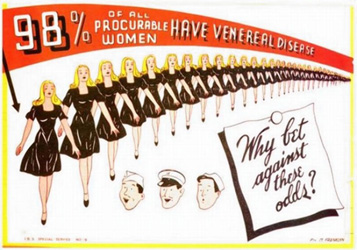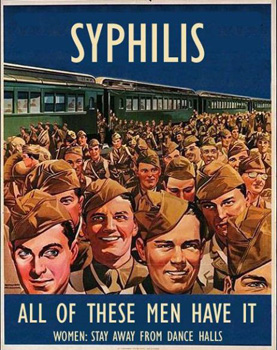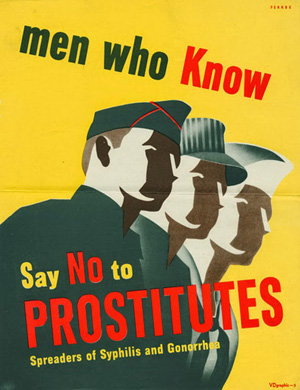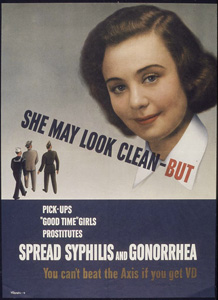For every branch of the United States military, the health of their soldiers has always been a critical area of focus. Throughout the history of the armed forces, the powers that be  have invested heavily in first aid, general medical care, food that can be easily transported and eaten on the battle field and other aspects of care for their soldiers.
have invested heavily in first aid, general medical care, food that can be easily transported and eaten on the battle field and other aspects of care for their soldiers.
Caring for soldiers across every branch of the military is no easy task, of course, and one of the biggest challenges has always been to encourage soldiers to care for themselves when they have been on leave. Many  soldiers treat their time away from the duties and responsibilities with a kind of reckless abandon. This seems to have been especially true during the 1930s and 40s, when the US Military Department stepped up their efforts to educate soldiers about the dangers of casual sex.
soldiers treat their time away from the duties and responsibilities with a kind of reckless abandon. This seems to have been especially true during the 1930s and 40s, when the US Military Department stepped up their efforts to educate soldiers about the dangers of casual sex.
Part of the reason for this dramatic increase in sex education and STD warning was an outbreak of syphilis and other venereal diseases which struck thousands of soldiers each and every day. In fact, during World War I, it was estimated that venereal diseases reduced the ability of about 18,000 soldiers to fight each and every day.
As a result, when World War II broke out, the branches of the US Armed Forces weren’t  taking any chances and launched an aggressive campaign to educate, warn and downright frighten soldiers and the general citizenry. The posters they used during this campaign remain some of the most popular forms of propaganda and remain highly collectible.
taking any chances and launched an aggressive campaign to educate, warn and downright frighten soldiers and the general citizenry. The posters they used during this campaign remain some of the most popular forms of propaganda and remain highly collectible.
Many posters demonised venereal diseases as forms of the enemy, creating the feeling that these diseases weren’t just the result of poorly planned sexual encounters, but active weapons employed by the enemy in order to bring down the US and Allied forces.
Other posters focused on warnings about not being deceived and reminders that it wasn’t just a soldier’s own health that was at stake. Reminding him about his family back home combined the power of guilt with scare tactics to drive their message home.
 Still others relied on fairly dubious “facts” which went largely unchecked. This was, of course, in the days before Wikipedia and Snopes so many people relied on the government to deliver honest information. While the motivation behind these posters is admirable, records from the CDC from a comparable time period indicate the Armed Forces generally didn’t bother with accuracy when it came to creating these posters.
Still others relied on fairly dubious “facts” which went largely unchecked. This was, of course, in the days before Wikipedia and Snopes so many people relied on the government to deliver honest information. While the motivation behind these posters is admirable, records from the CDC from a comparable time period indicate the Armed Forces generally didn’t bother with accuracy when it came to creating these posters.
Finally there were posters that advocated fiercely for both testing and treatment – routes that many men initially avoided as they thought they could hide the disease. These campaigns did a lot to help spread information regarding early testing and effective treatments. This type of advertising is still used today to encourage people to be regularly tested as treatments have advanced so far that many venereal diseases can now be treated quickly and relatively easily.
Today, these posters seem quaint and almost laughable, but they mark an incredibly progressive period in America’s sexual education history. While debates rage today about being open and honest about sexuality, casual sex and the spread of STDs, during World War II there was no room for debate. These posters appeared everywhere, including mainstream public places as a way to inform and educate absolutely everyone about the dangers.
When compared to the arguments about sex education today, it’s clear that we could learn a thing or two about how to approach public health issues. These posters may be a bit over the top, but their message was received loud and clear by soldiers, their families and people in general during the 1930s and 40s.
Generally speaking, this campaign is noted as being overall effective in both education and encouraging the development of better testing and treatment options. It also brought the issue to light for the first time for many Americans who simply didn’t realize the threat was so great or so pervasive. Today most people are aware of the problems of various STDs but the resurgence of diseases like syphilis and gonorrhoea prove that this type of education has a place in today’s America just as much as it did during World War II.










